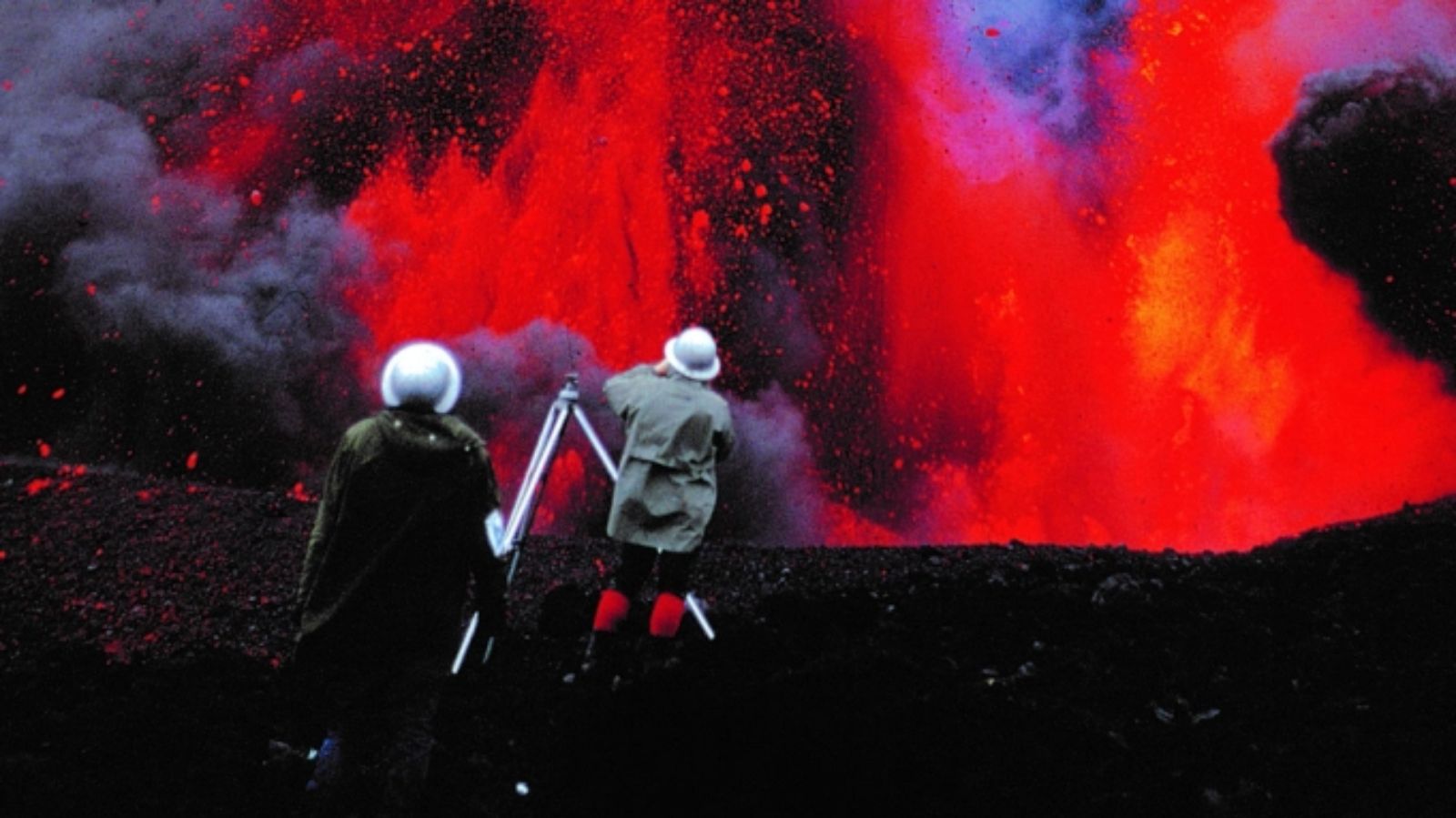Infamous had Capote, Antz had A Bug’s Life—the list goes on. Enter The Fire Within, Werner Herzog’s latest brush with nature’s extremities, and the second documentary this year to recount the lives, love, and deaths of volcanologists Katia and Maurice Krafft. First came Sara Dosa’s Fire of Love, a film that looked (at least before Venice crowned its Golden Lion) like the most beloved documentary of the year and a shoo-in for the Academy Award. In the history of serendipitous releases, one must always exist in the other’s shadow.
Working almost exclusively from the same archive of footage, Herzog and Dosa have produced two divergent films. In tone and sentiment, The Fire Within and Fire of Love are disparate yet nicely complimentary, and there’s fun to be had in such a clash of sensibilities. Where Dosa is sweet (romance, Francophilia, Miranda July), Herzog is characteristically austere (rotting cows, human corpses, surrealism, absurdity.) When Maurice begins affecting a red beanie, a nod to his hero Jacques Cousteau, Dosa spots a chance to homage Wes Anderson. Herzog outright mocks him, yet his film is ultimately the more reverent.
As its extended title suggests, The Fire Within is a requiem, and that decision to operate as custodian—to work on the margins—gives his film a beguiling solemnity that also sometimes leaves you wanting a bit more. Herzog, who turned eighty this year, can’t boast Dosa’s optimism and energy: his iconic voice disappears for large swaths here, replaced by familiar audio landscapes (evocative chanting, baroque compositions). This is not out of touch with his very best nature documentaries (Encounters at the End of the World, Fata Morgana, and most notably Lessons of Darkness), but the balance between late-period Herzog (intrepid entertainer) and classic Herzog (awestruck existentialist) is tipped a little heavily to one side.
Somehow his film feels the more ambitious of the two, far more interested in the cosmic elements of the Kraffts’ work. (He credits them for the images in his introduction and gets the story of their demise out of the way soon after.) There is only so much you can say about that footage: it is meant to be seen and, wherever possible, seen big. Like Dosa, Herzog pokes fun at the couple’s early, awkward showmanship (their curious experiments and idle, bad acting) but a deeply felt appreciation is there: at first he credits the Kraffts less as scientists than as filmmakers, later as great artists. For the final thirty minutes Herzog’s voice is almost entirely absent, allowing the most psychedelic footage to play out as he reaches for something transcendent. “These images have only been seen in dreams,” he grasps. You’re inclined to agree.
Curiously, Herzog’s film also skews toward the personal. In his most sentimental moment, the German plays footage of the team struggling to navigate a barren landscape in their ATV. In voiceover he gushes, present tense, about how much he wishes to be there. This is a radical filmmaker acknowledging two kindred spirits while also longing for the past; for an instant you feel the sweep of time and, perhaps, how much of it he might have left. His ode to the Kraffts is solemn, sparse, and hypnotic. Yes, fewer people will see it than the Sundance winner. Those that do won’t forget it.
The Fire Within screened at Doclisboa 2022 and is available digitally.

